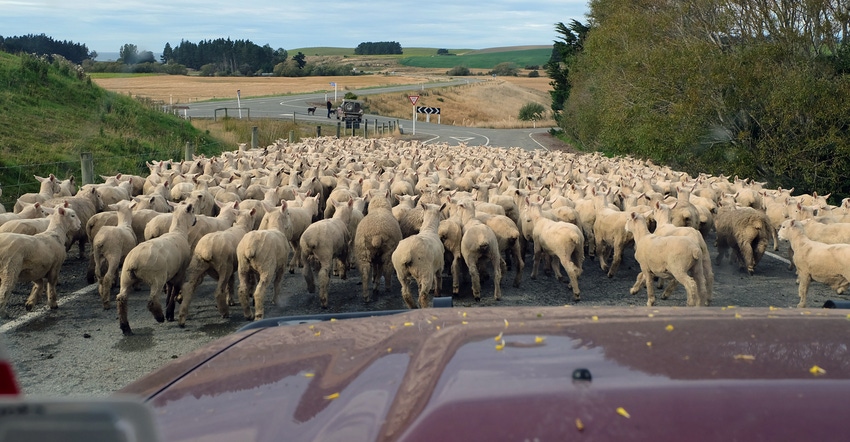April 22, 2017

By Elise Brown
I've been traveling across New Zealand on a working holiday visa since June 2016. I’ve worked on a dairy farm, a general farm, at a lodge and at a university sheep unit.
I’ve already shared how Indiana and New Zealand agriculture are similar. Here are eight differences between them.
1. No government subsidies for agriculture. Subsidies ended in New Zealand in the mid-1980s as the result of a budget crisis in the government. Farmers began to think of new ways to bring in income and cut costs. Sometimes, this meant diversifying both the types of crops and livestock grown and the types of products sold. At other times, this meant becoming bigger.
2. Numerous large-scale dairy farms and systems. When I was a calf-rearer, we cared for 1,400 calves, born on the farm over a three-month period in winter. Cattle grazed on open paddocks all year. Cows are only milked nine out of 12 months. For three months, no cattle go through the dairy shed. Calves are born during the three months of winter.
One exception was a freestall indoors system I visited during a conference. Those cows had free access to a robotic milking machine and could visit it anytime. There were many discussions about the merits of this "American shed," where the cattle were kept inside but with access to pasture. One speaker said, "This is different from a traditional dairy farm." But to me, it was a traditional dairy farm.
3. A lot more sheep. Numbers have dropped from the high point of 70.3 million sheep in 1982 to 27.6 million sheep in 2015, which is still six sheep per person there. Some of this is due to some operations recently switching from sheep to dairy because prices were better. However, sheep can still be seen along almost any road in New Zealand. Sheep stations are scattered around the country and run thousands of ewes. There are smaller operations, as well.
4. Irrigation essential in many places. Irrigation races line the South Island, bringing water to the plains from the mountains. One Mackenzie Country farm grows high-quality alfalfa in rocky soil thanks to irrigation. At the university sheep unit, I pulled irrigation lines with a four-wheeler. Each time, I was thankful I'm from a state with plenty of precipitation.
5. Sheds instead of barns. A landscape filled with barns is a distinct feature of Indiana agriculture. In New Zealand, farmers work in sheds, which can be many and scattered throughout the farm. There's nothing quite like a barn here. I miss them. Cows are milked in a "dairy shed."
6. Numerous deer farms. Deer are raised on farms with high fences. There are still wild deer, but it’s more common to see deer behind high fences along the main roads than to see them while hiking in the forests. Luckily, this means I don't hear of many deer and vehicle collisions.
7. Lack of livestock predators. This has been one of the best aspects of agricultural New Zealand. Rats will take chicken eggs, and stoats kill native birds. However, for livestock, the biggest threat is the hare. No foxes or coyotes here. And my personal favorite: no snakes.
8. Practically no corn. There’s sweet corn in vegetable-and-fruit-producing areas of the North Island, but fields upon fields of corn is a landscape I've only seen in the U.S. I saw no cornfields until I'd been here four months. On a drive close to the coast, I was startled by a familiar plant and exclaimed, "Wait, what? Corn!" There also were a couple of cornfields near the university and one on a drive south, which brings my cornfield sightings across 6,395 miles of driving to four small fields.
Through my travels, I've gained many new ideas and become more appreciative of my own country. I've warned my dad that I'll come home with all sorts of strange ideas.
I think he's ready for them.
Brown lives in Parke County when not working her way across New Zealand. To learn more, visit kiwihoosier.com.
You May Also Like




